Looking at the Details
By: Joanna Church, Women’s History and Resource Center Librarian
One of the more delightful aspects of GFWC Headquarters (if you ask me) is the way that little surprises can be found, if you look closely. For example, on the second floor of our main building there are several squirrels. Two can be easily found in the Albert Herter murals in our Drawing Room.
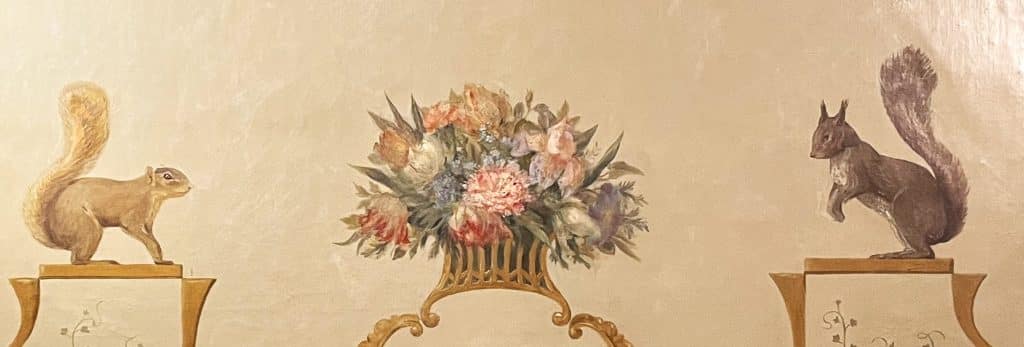
There are also a few that are harder to spot, though. Since I’d hate for you to miss them, please say hello to the flickertails, aka Richardson’s ground squirrels, who are incised onto the “North Dakota vase” on display in the Music Room.
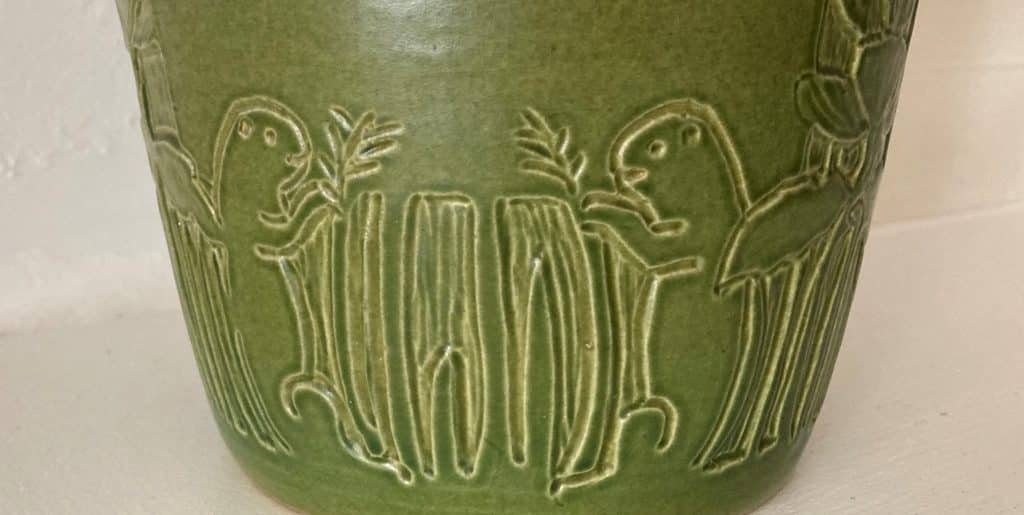
This 11” tall vase was made by Dr. Margaret Kelly Cable (1884-1960), the founding director of the ceramics program at the University of North Dakota. Cable’s works showcased North Dakota’s natural deposits of high grade clay, and celebrated the state’s flora and fauna such as prairie roses, wheat, and the aforementioned flickertails, all of which can be seen carved in low relief on the surface of our green vase.
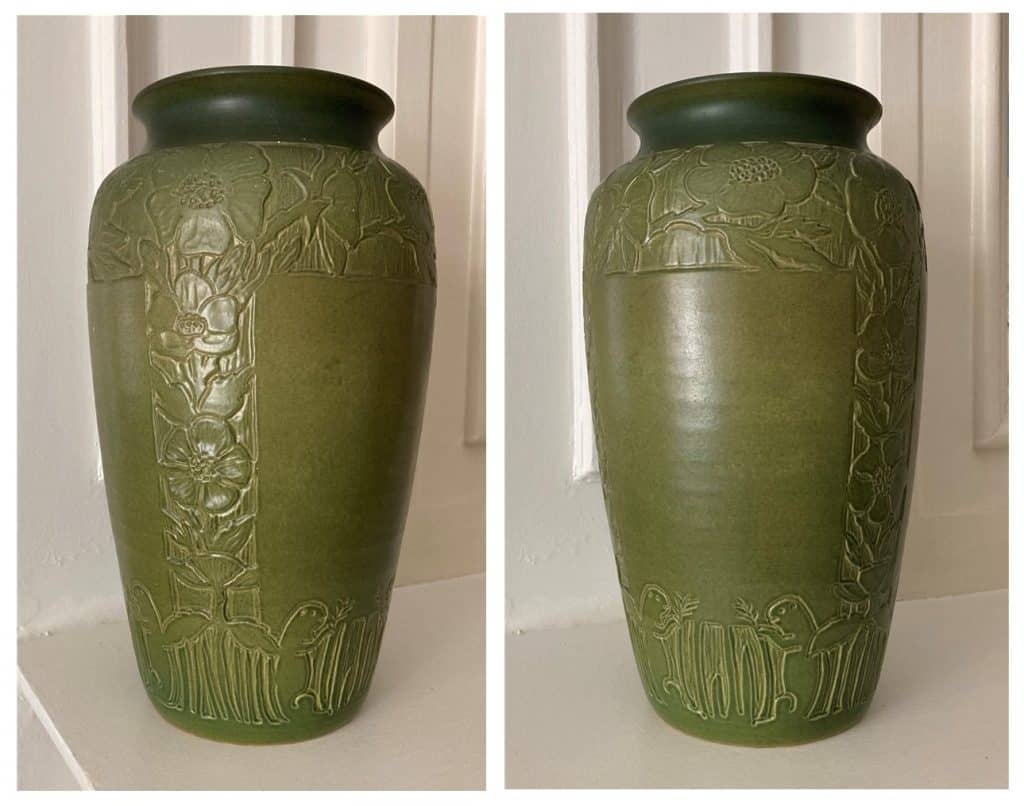
On the bottom is found the iconic cobalt blue School of Mines seal, first used on University of North Dakota “North Dakota clay” pieces in 1913. (I do love an artifact that’s clearly identified.) This particular work was donated to Headquarters in 1928 by the North Dakota Federation, and presented to GFWC President Mary Belle King Sherman by Cable herself at the 1928 GFWC Convention in San Antonio.
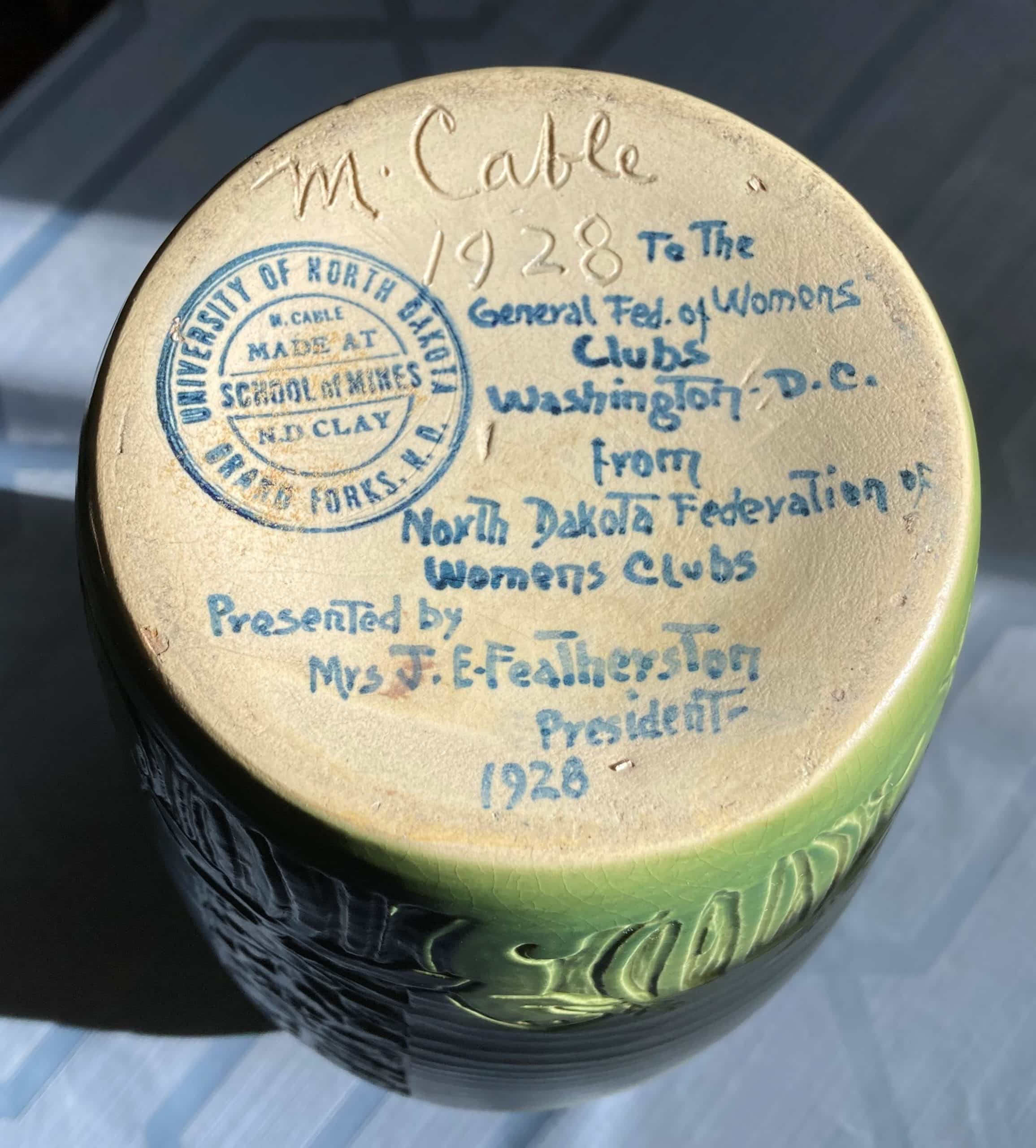
Left: The vase is labeled on the underside: “To the General Fed. of Women’s Clubs, Washington D.C. From North Dakota Federation of Womens Clubs. Presented by Mrs. J.E. Featherston, President [of the North Dakota Federation] 1928.” The 1928 Convention report adds more context: “Miss Margaret Cable of the University of North Dakota spoke on some phases of pottery [during the Report of the Committee on Civic Art] and presented Mrs. Sherman with a North Dakota pottery pot.”
Cable was not only an artist, she was also a well-regarded teacher, and an administrator who built a successful department that attracted and trained many renowned ceramicists. Her program delved into the technical, as well as artistic, elements of the craft, including a study of physical qualities of North Dakota clay, so prized by ceramicists. She studied Native American techniques, and developed a course for school children of the Turtle Mountain Band of Chippewa in the 1930s.
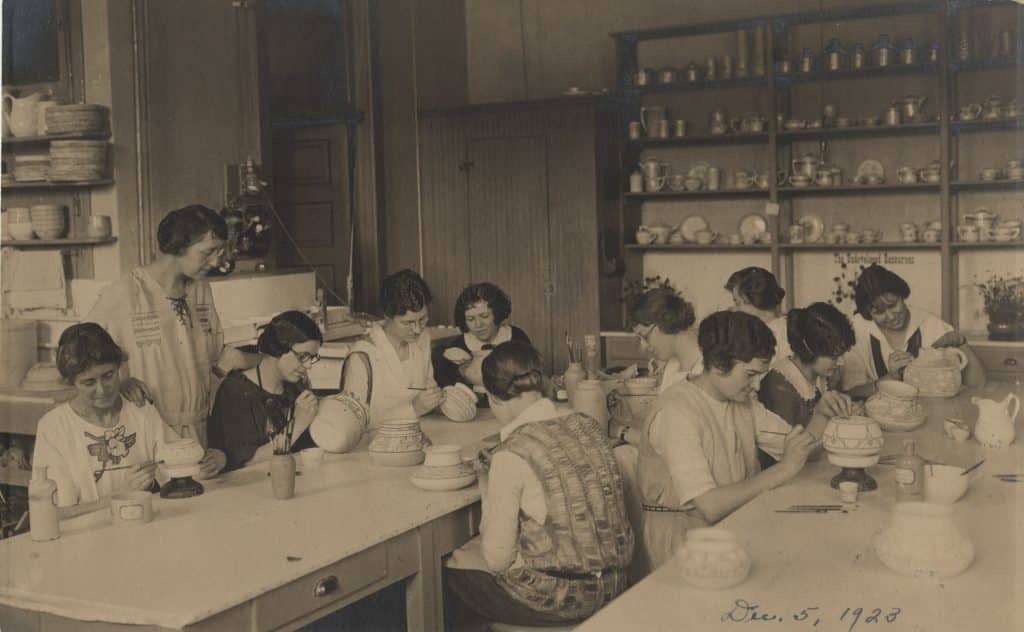
Above: Dr. Margaret Kelly Cable (standing at left) teaching a ceramics class at the University of North Dakota, 1923. Elwyn B. Robinson Department of Special Collections, Chester Fritz Library, University of North Dakota
Cable also served briefly as chairman of the GFWC Industrial Arts Committee; she is listed in the 1929 Directory in that role, though a November 1929 article in General Federation News reported that she’d had to resign for health reasons. She had planned to develop a display for clubwomen (one of the many traveling exhibits that the GFWC Fine Arts Department circulated in this era) focused specifically on North Dakota pottery, though it may not have come to fruition due to her resignation. Still, her work as a North Dakota artist was featured in the broader “American Pottery” exhibit that was introduced in the 1930-32 administration by Art Chairman Florence Topping Green.
North Dakota pottery is still sought after by collectors today, and Cable’s work is some of the most beloved; we’re proud to have a representative piece in the American Decorative Arts collection. If you visit GFWC Headquarters in Washington, DC, be sure to look for the North Dakota vase — and the many other little details that make Headquarters, and our collections, so special.
North Dakota Vase, GFWC American Decorative Arts collection, gift of GFWC North Dakota. 1928.003.1
Remember to check back next month for more stories from GFWC history (and present)! To learn more about the WHRC collections, visit the WHRC page or contact us at whrc@gfwc.org.
Joanna Church is the Women’s History and Resource Center Librarian at GFWC Headquarters in Washington, DC. She oversees the WHRC collection, handles research requests, and loves sharing our unique resources with fellow lovers of women’s history.
Learn More about the WHRC
The Women’s History and Resource Center
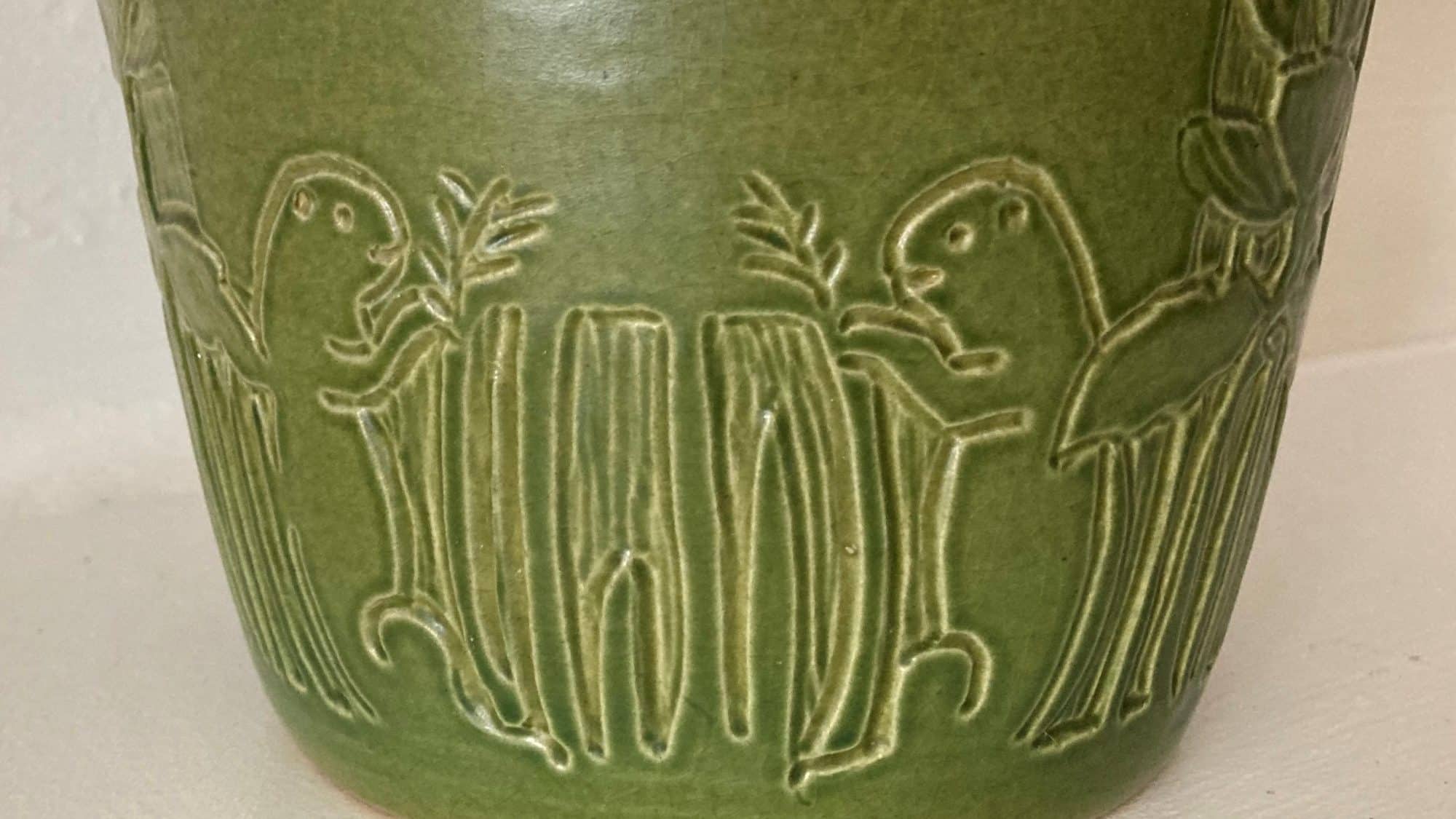
One reply on “WHRC: From the Archives”
What a gorgeous piece! Seems to be in the style of the American Arts and Crafts Movement. Our club is fortunate to have a museum nearby focused on this style. We are hoping to visit there. The have docents who focus on women’s role in the Arts and Crafts Movement. Thanks for sharing this with us!